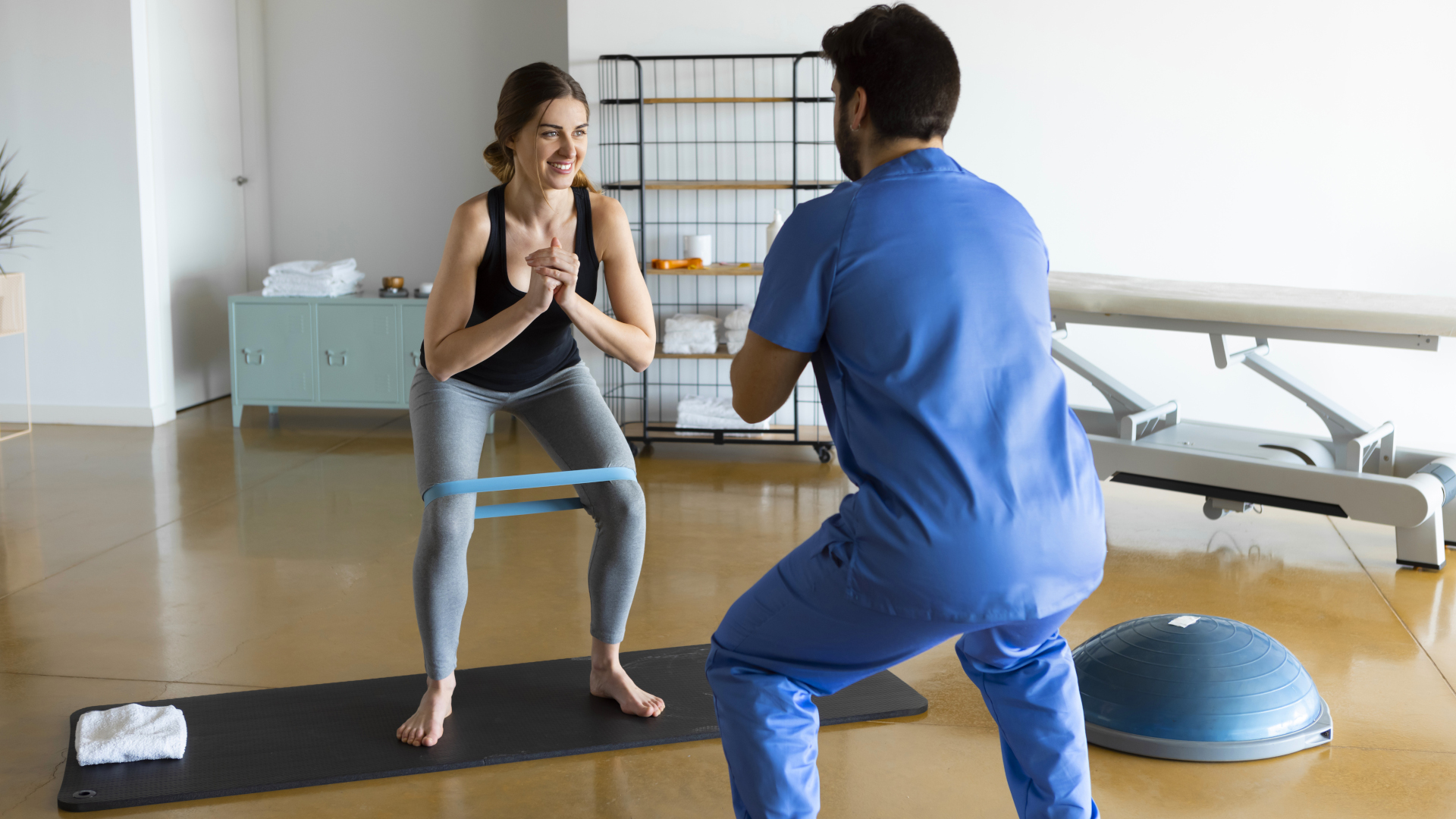Yes, you can still go hiking after a hip replacement
We speak to an Everest Triple Crown mountaineer about returning to the Himalayas after two hip replacement surgeries

In the spring of 2002, Ellen Miller summited Mount Everest for the second time, becoming the first American woman to reach the world’s tallest peak from both the north and the south sides in a single year. Previously, she had climbed Denali, Mount Elbrus, Kilimanjaro and all 54 of Colorado’s 14ers, and those are just some selected highlights from her illustrious mountaineering career. When I moved to Vail in 2009 and first met Miller, we weren’t wearing hiking boots however; rather, we were on yoga mats in a gentle class at the athletic center where we both worked. At the time I was a novice yoga teacher and Miller was the recent recipient of not one, but two new hips. To date, she's had four hip surgeries due to complications with the initial surgeries.
You might assume that such major surgery in such a crucial part of the body for hikers would be a career-ender, but for Miller, hip replacement surgery was just another mountain to climb. Rather than spelling the death of her mountain career, like many recipients of a total hip arthroplasty (THA), Miller found that it restored her ability to climb mountains, and hiking itself provided a means of rehab.

“Hiking is a wonderful activity for hip replacements because it's just walking,” says Miller, who moved to Colorado from Asheville at the age of 19, and has been hiking, running, climbing and skiing in the mountains for roughly four decades since. These days, in addition to her full-time caregiver job, she can usually be found staffing the US Mountain Running Team and tending to the nearby National Forest as a Volunteer Wilderness Ranger, all of which she has coined living “the Miller High Life".
Approximately 333,000 Americans receive a hip replacement each year according to Harvard Health, despite it being a major operation that involves removing damaged sections of the joint and replacing them with parts constructed of metal, ceramic, and very hard plastic. According to the Mayo Clinic, outcomes include reduced pain, and improved function and hip power. If it’s something you’ve been discussing with your doctor, it’s likely because your hip pain interferes with your ability to perform daily activities, and nonsurgical treatments haven't helped or are no longer effective. Reduced pain is reason enough to be considering such a major intervention, but it’s no surprise if you’re an active person and worried that such a major surgery will impede – rather than rejuvenate – your outdoor pursuits.

Can you go hiking after a hip replacement?
The Mayo Clinic advises that while some higher impact sports might not be accessible after a THA (think basketball), most people can participate in low impact activities like hiking. According to Vail-based physical therapist Carrie Eckenhoff of Equilibrium, it is totally reasonable to expect to be able to return to hiking after a hip replacement; the question is really how long it will take?
“It depends on the surgeon, protocol and approach – most hips these days are done with an anterior approach, so the patient is limited into hip extension and external rotation so as not to put too much stress on the incision/area of tissue vulnerability,” explains Eckenhoff.
“In general, very light hiking can happen in some cases as early as six weeks, although 12 weeks is more of the advised time period to wait before returning to recreational activities like hiking.”
All the latest inspiration, tips and guides to help you plan your next Advnture!
For Miller, the winning formula proved to be a combination of carefully managed expectations, time, and putting in the work.
“I had to adjust my expectations for what I was capable of doing while healing: length of time hiking, distances, etc. After each surgery, it took a good, honest year of careful rehab to get back to normal.”
But if you’re worried that your hiking career is going to turn into gentle walks on the beach, don’t limit yourself just yet. Case in point: Miller went on to trek into and climb Lhotse in 2009, followed by Manaslu in 2010, and Nuptse in 2013, adding another 80,000ft or so of elevation to her list of climbing accomplishments following her surgeries.
“These expeditions involved a lot of hip action: camping for weeks at extreme high altitude, carrying heavier backpacks, and vertical climbing moves in snow and on ice,” she recalls.

Now, statistically speaking at least, your post-hip replacement hiking goals won’t necessarily involve the world’s fourth and eighth highest peaks, so with the right approach, you should be able to get back out into whatever mountains you love – just plan on it taking some time and effort. The key is carefully following the advice of your orthopedic surgeon and physical therapist, especially since studies have shown that THA can lead to asymmetric gait patterns as well as loss of power in the opposite leg, according to 2019 research.
“Modern replacements are improving all the time, but the patient has to do the actual work. Be a team with your surgeon and go for your annual check ups for your replacements,” advises Miller, who also cautions that maintaining a healthy weight appropriate to your height and build is important for anyone with artificial joints.
Oh, and sprinkle in a little bit of patience to avoid the dreaded pitfalls of too-much-too-soon, cautions Eckenhoff.
“See a physical therapist for the first six weeks post-op to appropriately increase your exercises and activity level. At the very least, take it easy and don't rush your timeline.”
- The best trail running shoes: for great grip and agility on technical terrain
Julia Clarke is a staff writer for Advnture.com and the author of the book Restorative Yoga for Beginners. She loves to explore mountains on foot, bike, skis and belay and then recover on the the yoga mat. Julia graduated with a degree in journalism in 2004 and spent eight years working as a radio presenter in Kansas City, Vermont, Boston and New York City before discovering the joys of the Rocky Mountains. She then detoured west to Colorado and enjoyed 11 years teaching yoga in Vail before returning to her hometown of Glasgow, Scotland in 2020 to focus on family and writing.

